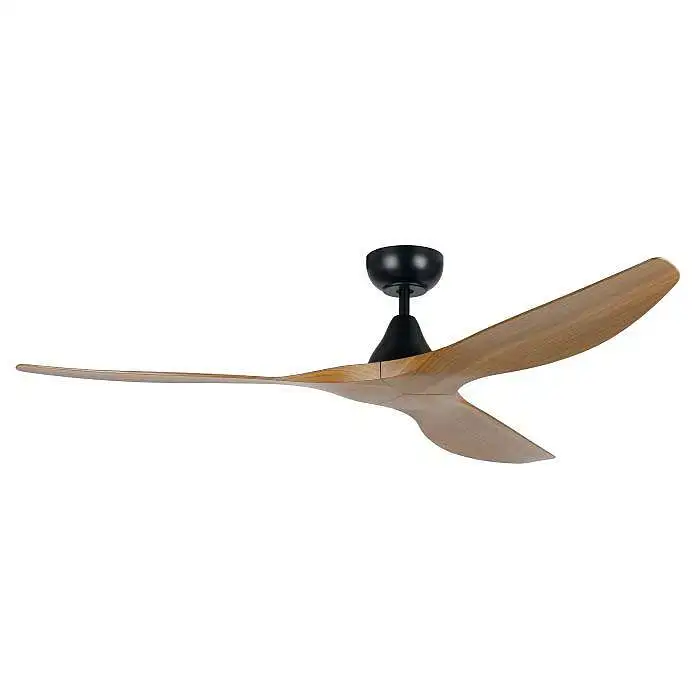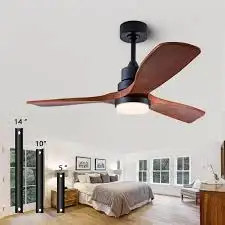Upgrade Your Comfort with Sleek Ceiling Fans for a Cool Home Experience

When it comes to maintaining comfort in your living space, ceiling fans have proven to be a timeless choice. These devices serve more than just an aesthetic purpose; they play a critical role in regulating air movement, making your home feel cooler during the hot months and warmer during cooler seasons. Their sleek designs can seamlessly integrate with any home decor, offering both functionality and style. Moreover, ceiling fans are energy efficient, allowing you to reduce reliance on air conditioning units, leading to lower energy bills. Not only do they enhance the ambiance of a room, but they also provide a sustainable solution to climate control. Today's ceiling fans come in a variety of designs, materials, and colors, making it easy to find one that complements your home. From minimalist to ornate styles, you can choose a fan that fits perfectly within your interior theme. Here are some popular styles: Choosing a quạt trần âm trần or recessed ceiling fan is not just about comfort; it's also about efficiency. Modern ceiling fans use fewer watts than traditional models, which means they consume less electricity. This energy efficiency contributes to a smaller carbon footprint. More importantly, many modern fans come equipped with Energy Star ratings, ensuring that they meet stringent energy efficiency guidelines set by the EPA. By investing in a high-quality ceiling fan, you can enjoy a comfortable atmosphere while making a positive impact on the environment. Installing a ceiling fan can be a straightforward process, especially if you follow the manufacturer’s instructions. Here are essential tips for installing and maintaining your fan: One of the significant advantages of using ceiling fans is their ability to improve indoor air circulation. A well-circulated room feels more refreshing, reducing the feeling of stuffiness. This is particularly important in closed spaces where air can stagnate, leading to discomfort. By moving air around, ceiling fans create a wind-chill effect that can help you feel cooler and more comfortable regardless of the actual temperature. In winter, reversing the blades can push warm air down, indirectly heating your space without additional energy consumption. Another less obvious benefit of ceiling fans is their role in managing humidity levels and allergens. By promoting air circulation, ceiling fans can help reduce places where humidity settles, preventing mold and mildew growth, which can lead to health issues. Furthermore, maintaining good air circulation can help disperse allergens such as dust, pet dander, and pollen, making your home a healthier environment for everyone. When selecting a ceiling fan, size is a crucial factor. A fan that is too small will struggle to circulate air effectively, while an oversized fan can overpower a room aesthetically and functionally. The general rule of thumb is to choose a fan based on the room size: When budgeting for a new quạt trần âm trần, consider not only the initial purchase price but also the long-term savings on energy costs. While some models might seem expensive upfront, energy-efficient fans can save money over time through lower electricity bills. Additionally, take into account installation costs if you're hiring a professional. Balancing cost, design, and performance can help you select a fan that meets your specific needs without breaking your budget. The ideal speed setting depends on the season and your comfort level. In summer, use higher speeds to give a cooling effect. In winter, using a lower speed setting works best to circulate warm air. Absolutely! By using ceiling fans in conjunction with your HVAC system, you can set your thermostat a few degrees higher in summer and a few degrees lower in winter, which can lead to significant energy savings over time. While you can install a ceiling fan yourself if you're experienced with electrical work, hiring a licensed electrician is recommended for safety and ensuring proper installation, especially if you're dealing with existing wiring.Upgrade Your Comfort with Sleek Ceiling Fans for a Cool Home Experience
Why Choose Ceiling Fans?
Modern Designs for Every Room
Energy Efficiency and Environmental Impact
Installation and Maintenance Tips
Enhancing Indoor Air Quality with Ceiling Fans
Better Air Circulation
Allergy and Humidity Control
Choosing the Right Size Ceiling Fan
Cost Consideration and Budgeting
FAQ
How do I determine the right speed setting for my ceiling fan?
Can ceiling fans help reduce energy bills?
Do I need a licensed electrician to install my ceiling fan?





